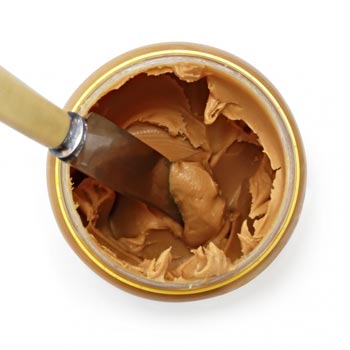Natural Peanut Butters

|
 In the old days, peanut butter was made by simply grinding peanuts and perhaps adding a dash of salt. The only problem with this approach is that the natural oils in the fresh ground peanuts separated and formed a pool of peanut oil on top that had to be stirred before first use.
In the old days, peanut butter was made by simply grinding peanuts and perhaps adding a dash of salt. The only problem with this approach is that the natural oils in the fresh ground peanuts separated and formed a pool of peanut oil on top that had to be stirred before first use.
When hydrogenated and partially-hydrogenated (trans-fatty) oils became more widely used by the food industry, manufacturers began adding these unhealthy oil alternatives to stabilize the peanut butter so that the oil would no longer separate. The peanut butter became lighter and creamier in texture, was easier to spread on bread, and more importantly, its oil did not separate. However, its taste changed significantly with the exchange of natural peanut oils with manufactured ones.
With today's focus on healthy eating along with proven health risks associated with hydrogenated and partially-hydrogenated oils, we see a move back to natural peanut butters. But buyer beware -- not all peanut butters marketed as "natural" are made with healthy ingredients. In this article, we'll look at some natural peanut butters currently on the market and how they stack up.
What Is Natural Peanut Butter?You can always tell if a peanut butter is really natural by reading the nutritional label. Essentially you should only see two ingredients: peanuts and salt. If you see any other ingredients such as palm oil or sugar, it's not truly natural in the sense of being good for you.
Peanut oil contains healthy monounsaturated fats which studies have shown lower bad cholesterol (LDL) and raise good cholesterol (HDL) in the body. When it is replaced with other oils in peanut butter, you're losing out on the health benefits of this timeless treat.

|




